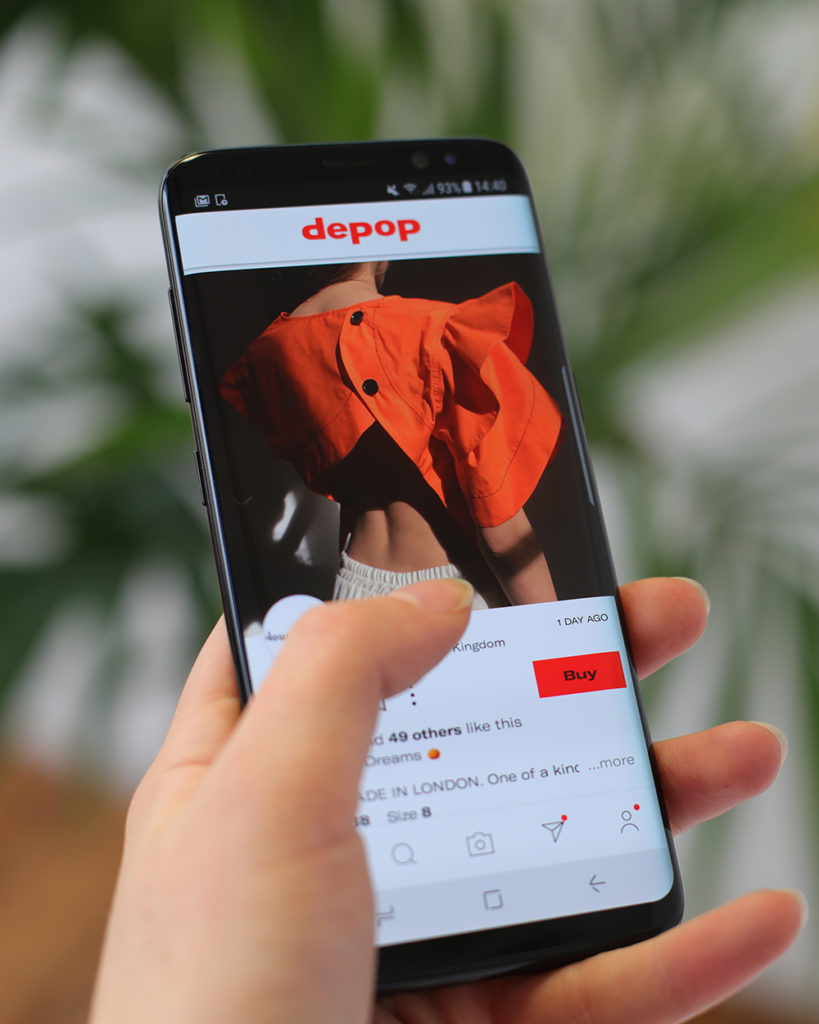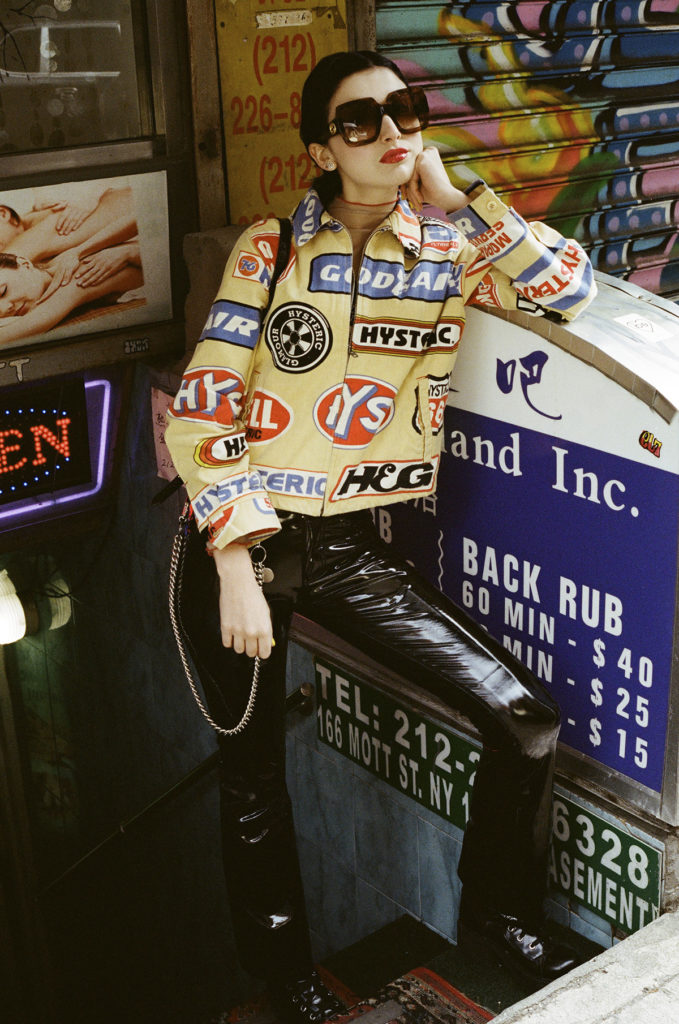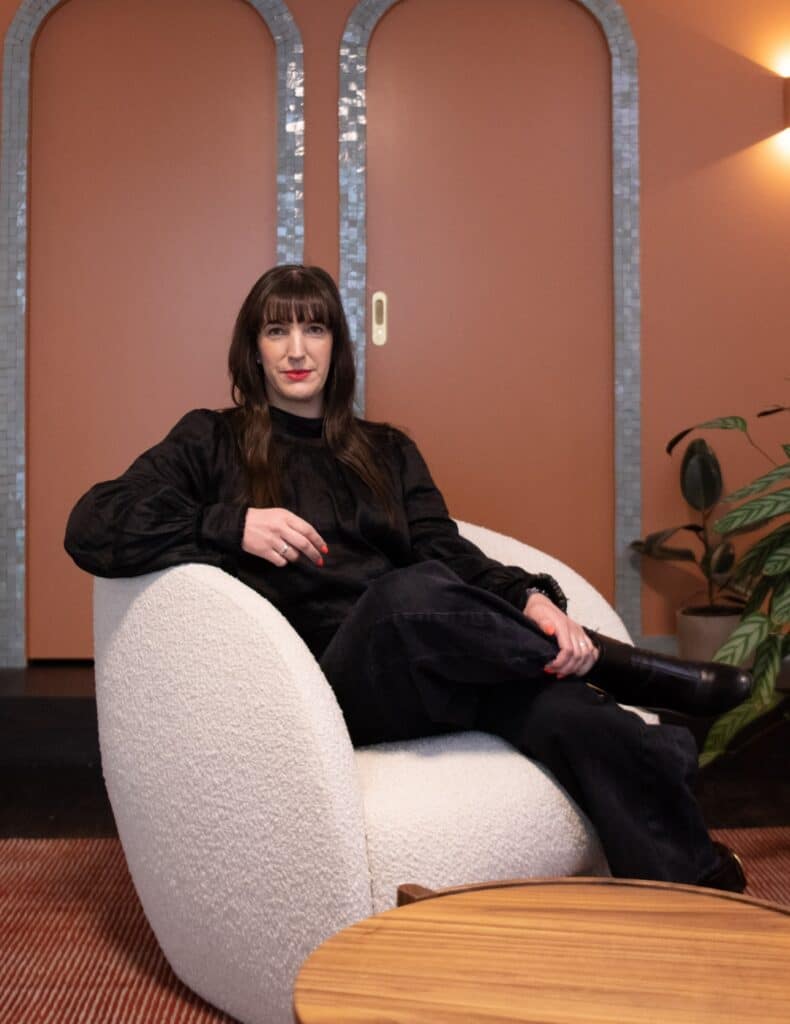With inspiring visuals and curated offerings, re-sale app Depop has created a global community centred around pre-loved clothing.
Vintage is having a moment. In the era of fast-fashion and mass trends, more and more people are embracing secondhand clothing for its affordability and exclusivity; not to mention pre-loved clothing is also an environmentally friendly way to get your fashion fix.
With circularity a hot topic in the conversations around sustainability (and brands themselves getting onboard) the resale clothing market is going to become increasingly relevant.
Read more: Here’s why fashion resale is set to shake up your shopping habits… and the fashion market
However, not everyone has the time and dedication required to trawl through the vast array of options on eBay or consignment sites, or sift through the racks at SaveMart or the Salvation Army.
For many the solution lies in social media and smartphone apps – with purveyors of pre-loved clothing utilising Instagram to sell their wares in a more curated way.
Some of the most well known global consignment companies have created their own apps (like The Real Real and Vestiaire Collective). These focus on high-end designer clothing which, though full of relative bargains, aren’t generally the place to pick up some old blue jeans. And with clear cut imagery and a sell-on-behalf model, they can feel a little clinical.
And this is where Depop differs. The resale app combines social networking and content creation with an online marketplace, providing convenience, exclusivity and, most importantly, a sense of community. With an interface similar to social media apps – there’s a following feed, explore function and direct messaging – discovery and dialogue are far more accessible, and inspiring.

Depop also gives you the ability to follow users with a similar aesthetic to yours, which, for anyone who has had to sift through auctions tagged “steampunk” in search of a frothy white blouse, will be a relief.
Our quick scroll through the app revealed items that have long been on our wish list: vintage Frye boots, 80’s blouses, nylon Prada bags, high cut swimwear, and more.
The range of items for sale on the platform isn’t limited to traditional vintage fashion (though there is plenty of that available) as its user base also offer pre-loved garments from contemporary brands.
Increasingly popular overseas – there are 17 million users worldwide – Depop is starting to gain traction in New Zealand thanks to our love of thrifting and peer-to-peer selling.
We caught up with the folks at Depop to find out what it is, why it was founded, and how it’s changing the resale market.
For those who have never heard of Depop, could you explain what it is and how it works?
Depop is a fashion marketplace for the next generation to buy, sell and get inspired. Like any marketplace, we are driven by buyers and sellers. However, anyone can set up a shop on Depop. There is no barrier to setting up your own shop, it takes less than five minutes and there’s no fee to join. All you need is a point of view, dedication, and some clothes! So much of the app experience is browsing and exploration as users take inspiration either to create their own shops, or to combine influences to create their own individual style.
When was Depop launched and where?
Depop was founded in 2011 in London by Simon Beckerman.
What was the motivation behind creating the app?
Prior to starting Depop, our founder, Simon Beckerman, created a magazine in Italy called PIG. While working at the magazine, Simon wanted to build a community and a social network where the magazine’s readers could buy the items featured within; the coolest and most inspiring products from around the world discovered by the PIG team.
Simon’s lightbulb moment occurred when he had a coffee table full of items he’d be meaning to sell. The idea suddenly came to him – what if there was a place for young, emerging creatives to not only buy interesting and exciting things, but they could also sell them? And Depop was born.

What makes Depop different to other e-comm resale platforms like eBay or Facebook marketplace?
There are two things that make Depop unique. First, is that we focus on the youth of today. In fact, 90 percent of our users are under the age of 26 – better known as Generation Z. We focus on them because not only will they determine the future of fashion, but also, they will be the largest consumer group next year.
And secondly, Depop is not just an e-commerce platform, Depop is a community. A community of 17 million users [in 147 countries] around the world who engage, share and inspire each other that is part of a generation that is currently not being served by the fashion industry. An industry that is: hard to break into, trends are set from the top, and it’s not sustainable, it’s wasteful.
Using Depop is a very visual, social experience – why was this important?
Depop blends the aesthetics of social media and the mechanics of a marketplace, so our users don’t just come to Depop to buy and sell – they also share, engage with and inspire one another.
Anyone can set up a Depop shop in minutes and find an audience of like-minded individuals. As a result, our community are influencing trends within the wider fashion industry with the choices they’re making and building real businesses off the back of it.

Are there any strategies or lessons you can recommend to become a successful seller?
Consistency is key! Stay active on the app, and be kind and straight forward to your customer base.
Who are some of your most successful or most influential sellers internationally?
Bella McFadden, @internetgirl, is one of the most successful Depop sellers. She’s developed a following of more than 500k followers on Depop because of her taste, aesthetic and style, making a healthy six figures from her shop. Through Depop, she’s made enough money to relocate to LA and hire a team to help her keep selling, as well as start her own brand and build her YouTube audience so she can share her weekly style with tens of thousands of people weekly.
Another top seller is @pasttrash. London-born sellers Bo and Eve Brearley are the brains behind @pasttrash. Since opening their Depop shop in 2015, they’ve turned a 20 euro loan on holiday in Italy into a serious business with over 200k followers and a loyal fanbase.
Do any celebrities or famous influencers use the platform?
Yes! Celebrities and influencers who are active Depop users range from Lily Allen, Ruby Aldridge, Suki Waterhouse, Maisie Williams, Dita Von Teese, Chiara Ferragni, Noah Cyrus, to Kali Uchis and Rico Nasty, to name a few.
What, in your opinion, is the coolest thing about Depop?
Our community, hands down.
Do you think Depop is going to change the way we buy pre-loved clothing?
Depop represents a practical step in the right direction for the fashion industry. Our business model innately fuels a circular mindset because we give clothes a new lease of life by way of our community, and in doing so are aiding in lessening waste.
Our mission at Depop is to empower the next generation to transform fashion, and we’ll continue to focus on providing our amazing, global community of young and emerging creatives with opportunities for entrepreneurship while celebrating circularity and second-hand as an alternative to everything else that’s out there.











